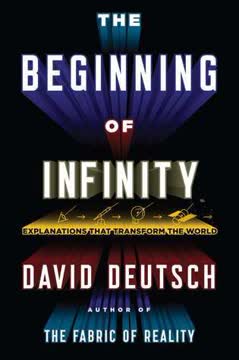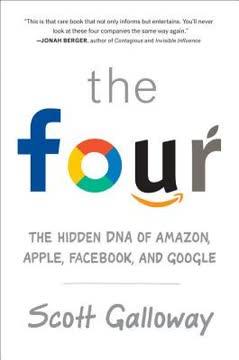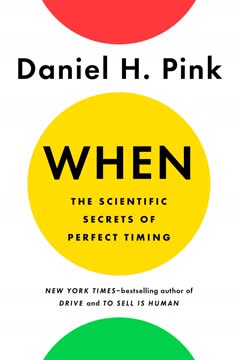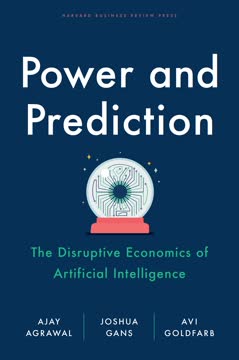Key Takeaways
1. New power models are reshaping our world, driven by participation and peer coordination
Power, as philosopher Bertrand Russell puts it, is the "ability to produce intended effects."
Shifting power dynamics. The rise of new power models is fundamentally changing how we interact, organize, and create value. These models harness the energy and enthusiasm of crowds, enabling unprecedented levels of participation and peer-to-peer collaboration. Examples include:
- Social movements like #MeToo and Black Lives Matter
- Platform businesses like Airbnb and Uber
- Open-source projects like Wikipedia and Linux
Democratization of creation. New power models are breaking down traditional barriers to entry, allowing individuals to:
- Create and distribute content globally
- Mobilize large groups around shared interests
- Challenge established institutions and norms
This shift is not just technological but cultural, reflecting changing expectations about agency, transparency, and participation in all aspects of life.
2. Old power operates like currency, while new power flows like a current
Old power works like a currency. It is held by few. Once gained, it is jealously guarded, and the powerful have a substantial store of it to spend. It is closed, inaccessible, and leader-driven. It downloads, and it captures.
Contrasting models. Old power and new power operate on fundamentally different principles:
Old Power:
- Centralized and hierarchical
- Controlled by a select few
- Guarded and accumulated
New Power:
- Decentralized and networked
- Open and participatory
- Flows and surges
Implications. This paradigm shift affects all sectors of society:
- Business: From closed innovation to open collaboration
- Politics: From top-down campaigns to grassroots movements
- Media: From professional gatekeepers to user-generated content
Organizations and leaders must adapt to this new reality or risk becoming irrelevant in an increasingly networked world.
3. The participation scale: From consuming to shaping in the new power paradigm
New power behaviors: Sharing, affiliating, funding, producing, and shaping.
Levels of engagement. The participation scale illustrates the spectrum of involvement in new power models:
- Consuming: Passive engagement
- Sharing: Spreading ideas and content
- Affiliating: Joining groups or causes
- Funding: Contributing resources
- Producing: Creating content or value
- Shaping: Influencing the direction of a community or platform
Increasing agency. As individuals move up the scale, they gain more influence and ownership within the system. This progression reflects a fundamental shift in how people engage with institutions and each other.
Key factors driving participation:
- Low barriers to entry
- Clear pathways for increased involvement
- Meaningful feedback loops
- Sense of ownership and agency
Successful new power models create opportunities for participants to move up this scale, fostering deeper engagement and loyalty.
4. ACE framework: Creating ideas designed to spread in a new power world
ACE stands for the three design principles key to making an idea spread in a new power world: Actionable, Connected, Extensible.
Designing for virality. The ACE framework provides a blueprint for creating ideas that resonate and spread in a networked environment:
Actionable:
- Clear call to action
- Easy to participate
- Immediate gratification
Connected:
- Fosters peer-to-peer relationships
- Creates sense of community
- Aligns with shared values
Extensible:
- Adaptable to different contexts
- Encourages remixing and personalization
- Allows for emergent creativity
Examples in action:
- Ice Bucket Challenge: Simple action, social connection, personal variations
- #BlackLivesMatter: Clear message, community building, adaptable to local contexts
- TED Talks: Actionable ideas, global community, TEDx events
By incorporating these elements, ideas become more likely to gain traction and spread organically through networks.
5. The art of blending power: Combining old and new power for maximum impact
Those who master the skills we have laid out in this book will be able to shift between old and new power as situation and strategy demands: to flip from open to closed, to toggle between "movement" and "institution," to know when to control and when to release control.
Strategic flexibility. The most effective organizations and leaders learn to blend old and new power approaches:
Old Power Strengths:
- Stability and consistency
- Efficient execution
- Clear accountability
New Power Strengths:
- Rapid innovation and adaptation
- Mass engagement and participation
- Distributed problem-solving
Case studies in blending:
- LEGO: Combining traditional product development with crowdsourced ideas
- NASA: Integrating open innovation challenges with institutional expertise
- Pope Francis: Balancing papal authority with grassroots engagement
Key to successful blending:
- Understanding the strengths and limitations of each approach
- Identifying when to deploy old or new power tactics
- Creating synergies between traditional structures and networked communities
Organizations that master this art of blending can harness the best of both worlds, becoming more resilient and adaptive in a rapidly changing landscape.
6. New power leadership: Signaling, structuring, and shaping for crowd engagement
The great challenge of the new power community is to weigh the needs of the three different groups, which can easily fall into conflict.
New leadership paradigm. Effective new power leaders must balance the interests of:
- Platform owners/stewards
- Super-participants
- Everyday participants
They do this through three key capabilities:
Signaling:
- Communicating values and intentions
- Inspiring participation and agency
- Leading by example
Structuring:
- Creating frameworks for engagement
- Designing feedback loops
- Establishing clear pathways for increased involvement
Shaping:
- Influencing community norms and culture
- Guiding the overall direction of the movement
- Fostering a sense of shared purpose
Examples of new power leadership:
- Ai-jen Poo (National Domestic Workers Alliance): Empowering marginalized workers
- Beth Comstock (GE): Driving innovation through open collaboration
- Lady Gaga: Cultivating an engaged fan community (Little Monsters)
These leaders succeed by amplifying the voices of their communities while providing meaningful structures for participation and growth.
7. Building a full-stack society: Reimagining institutions for meaningful participation
To close this gap, it will be critical to actually reduce wealth and income inequality and change the material conditions of those who have been left behind. But a subtler challenge is in how we create more meaningful opportunities for people to actively shape their lives and connect with the institutions that shape them.
Addressing alienation. The full-stack society concept aims to combat growing feelings of powerlessness and disconnection by:
- Creating multiple layers of engagement in key institutions
- Fostering a sense of ownership and agency among citizens
- Bridging the gap between traditional power structures and networked communities
Reimagining core institutions:
- Media: De Correspondent's collaborative journalism model
- Government: Audrey Tang's digital democracy initiatives in Taiwan
- Healthcare: Patient-driven research and care networks
Key principles for building a full-stack society:
- Transparency and open data
- Participatory decision-making processes
- Distributed problem-solving and innovation
- Adaptive governance structures
By redesigning our institutions to embrace new power principles, we can create a more engaged, resilient, and equitable society that harnesses the collective intelligence and creativity of its members.
Last updated:
FAQ
What's New Power about?
- Explores power dynamics: New Power by Jeremy Heimans and Henry Timms examines the shift from traditional, hierarchical forms of power (old power) to more decentralized, participatory forms (new power).
- Old vs. New Power: The book contrasts old power, which is closed and leader-driven, with new power, which is open, participatory, and peer-driven.
- Real-world examples: It provides case studies like the #MeToo movement and platforms like Airbnb to illustrate how new power operates in practice.
Why should I read New Power?
- Understanding modern dynamics: The book helps you grasp the evolving landscape of influence and participation in society.
- Practical insights: Offers actionable strategies for individuals and organizations to mobilize communities and leverage new power dynamics.
- Cultural relevance: With the rise of social media and grassroots movements, the concepts are increasingly relevant for understanding contemporary activism and engagement.
What are the key takeaways of New Power?
- Power is participatory: Power is shifting towards participatory models, where collective action and community engagement are paramount.
- Importance of community: Building and nurturing communities is essential for mobilizing new power effectively.
- Navigating old and new power: Provides guidance on blending old and new power strategies, recognizing their usefulness in different contexts.
What are the best quotes from New Power and what do they mean?
- “The future will be a battle over mobilization.”: Success will depend on the ability to mobilize people effectively.
- “New power operates like a current.”: New power is fluid, dynamic, and collective, unlike the static nature of old power.
- “The goal with new power is not to hoard it but to channel it.”: Sharing and collaboration are more effective than control and exclusivity.
What is the difference between old power and new power according to New Power?
- Old power is exclusive: Characterized by being held by a few in hierarchical structures with controlled access and influence.
- New power is inclusive: Open and participatory, allowing many individuals to contribute and shape outcomes collectively.
- Mechanisms of operation: Old power operates through top-down control, while new power thrives on peer-to-peer engagement.
How do ideas spread in a new power world according to New Power?
- Meme drops vs. sound bites: Ideas spread laterally and are remixed by communities, unlike traditional top-down sound bites.
- Actionable, connected, extensible: Successful ideas encourage participation, foster community, and allow for customization.
- Examples of successful campaigns: Campaigns like the Ice Bucket Challenge illustrate viral spread through social networks.
What is the "participation premium" mentioned in New Power?
- Definition of participation premium: Added value from engaging individuals, combining economic returns with purpose and community involvement.
- Components of the premium: Calculated as (Something in Return + Higher Purpose) x Participation, enhancing value through involvement.
- Real-world applications: Examples like Star Citizen show how backers feel ownership and community, enhancing their experience.
How can organizations transition from old power to new power according to New Power?
- Assessing strategy: Evaluate if embracing new power aligns with strategic goals and adds value.
- Building legitimacy: Establish trust and credibility with the community, investing in relationships.
- Embracing flexibility: Be willing to relinquish control and allow for unexpected outcomes, fostering participation.
What role do super-participants play in new power communities according to New Power?
- Definition of super-participants: Most active and engaged community members, contributing significantly to content and culture.
- Influence on community dynamics: Shape norms and drive engagement, acting as leaders within the community.
- Recognition and rewards: Effective communities recognize and reward super-participants, ensuring they feel valued.
How does New Power address the challenges of misinformation and hate in the digital age?
- Dual nature of new power: Acknowledges new power can amplify both positive change and negative elements like hate and misinformation.
- Need for counter-narratives: Emphasizes creating alternative narratives to counteract harmful ideologies.
- Call for responsibility: Advocates for collective responsibility to ensure new power is used constructively.
What are some successful examples of new power in action according to New Power?
- #MeToo movement: Exemplifies new power by allowing individuals to share stories and mobilize action without a central leader.
- Airbnb's community engagement: Successfully engages hosts and guests, creating a participatory culture.
- Lego's transformation: Embraced its adult fan community, transitioning from old power to new power by valuing super-participants.
What is the future of new power according to the authors of New Power?
- Full-stack society vision: Envisions a future with meaningful participation in all life aspects, requiring cultural and structural shifts.
- Emphasis on collaboration: Future relies on collaborative efforts bringing diverse voices together to address social issues.
- Innovative platforms: New technologies like blockchain can facilitate equitable participation, reshaping power distribution.
Review Summary
New Power receives mostly positive reviews for its insightful analysis of how technology and social media are reshaping power dynamics. Readers appreciate the numerous examples and case studies illustrating the shift from "old power" to "new power" structures. Some find the book repetitive or politically biased, while others praise its framework for understanding modern movements and organizations. Critics note that the book sometimes oversimplifies complex issues, but many readers consider it essential for understanding today's connected world and its impact on business, politics, and society.
Similar Books









Download PDF
Download EPUB
.epub digital book format is ideal for reading ebooks on phones, tablets, and e-readers.




